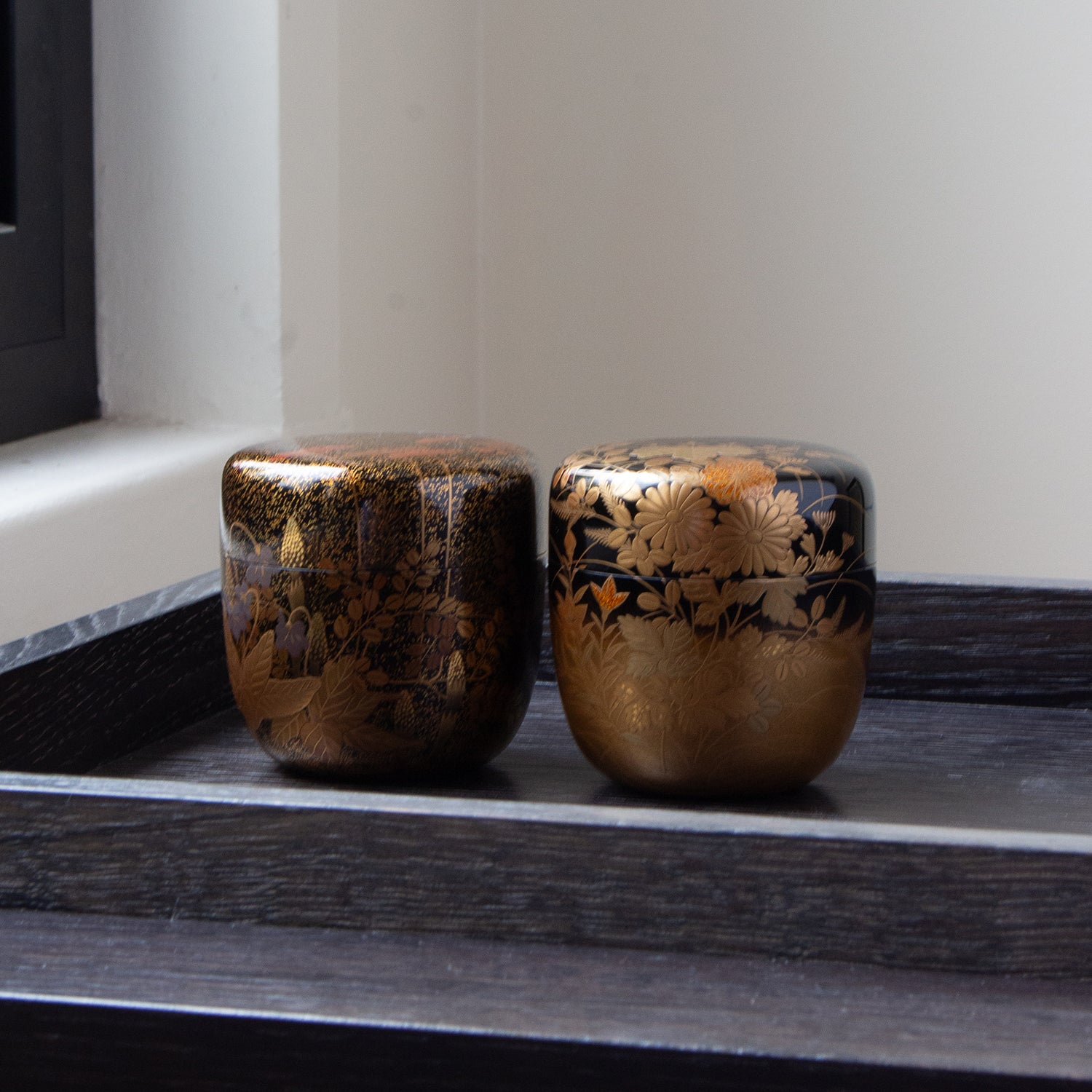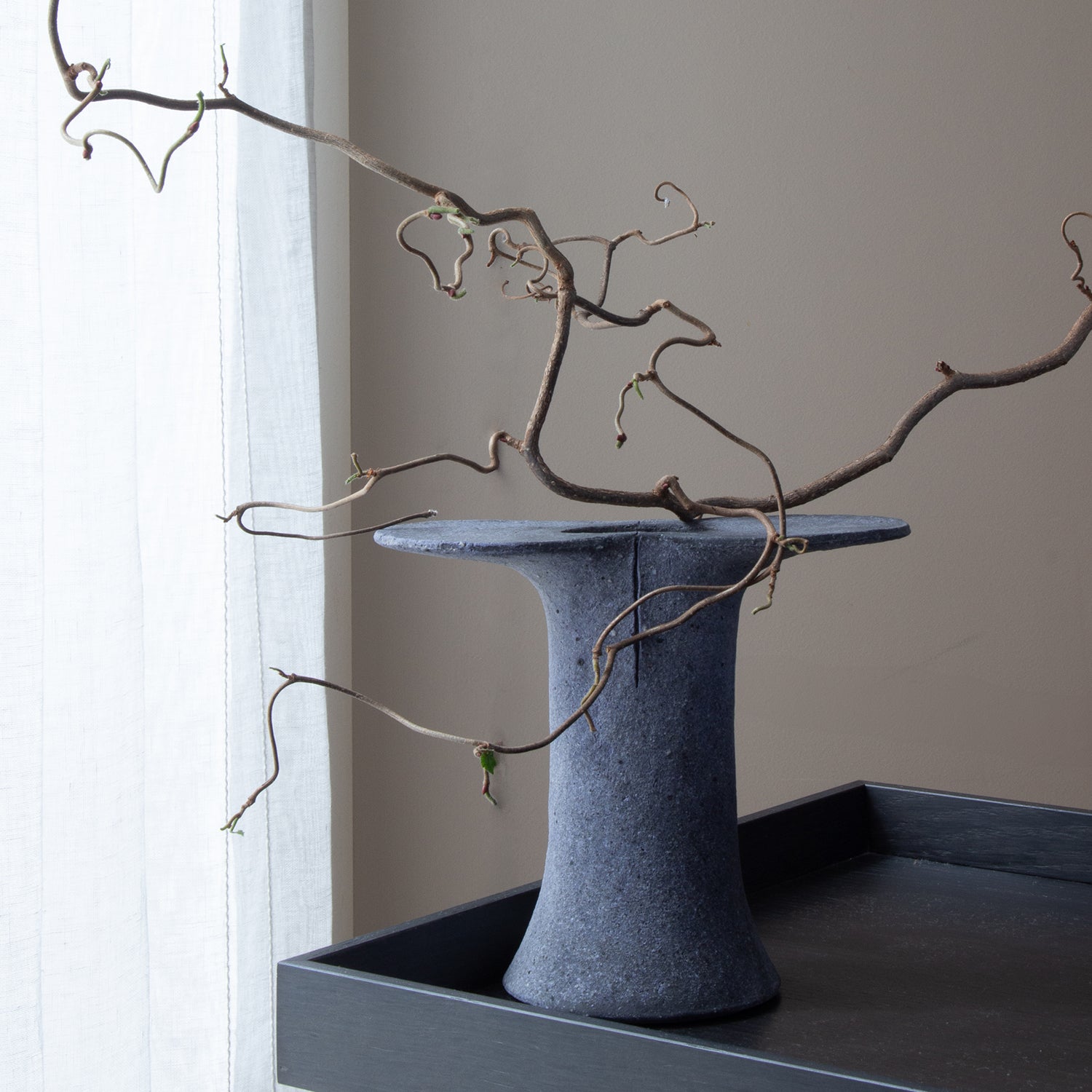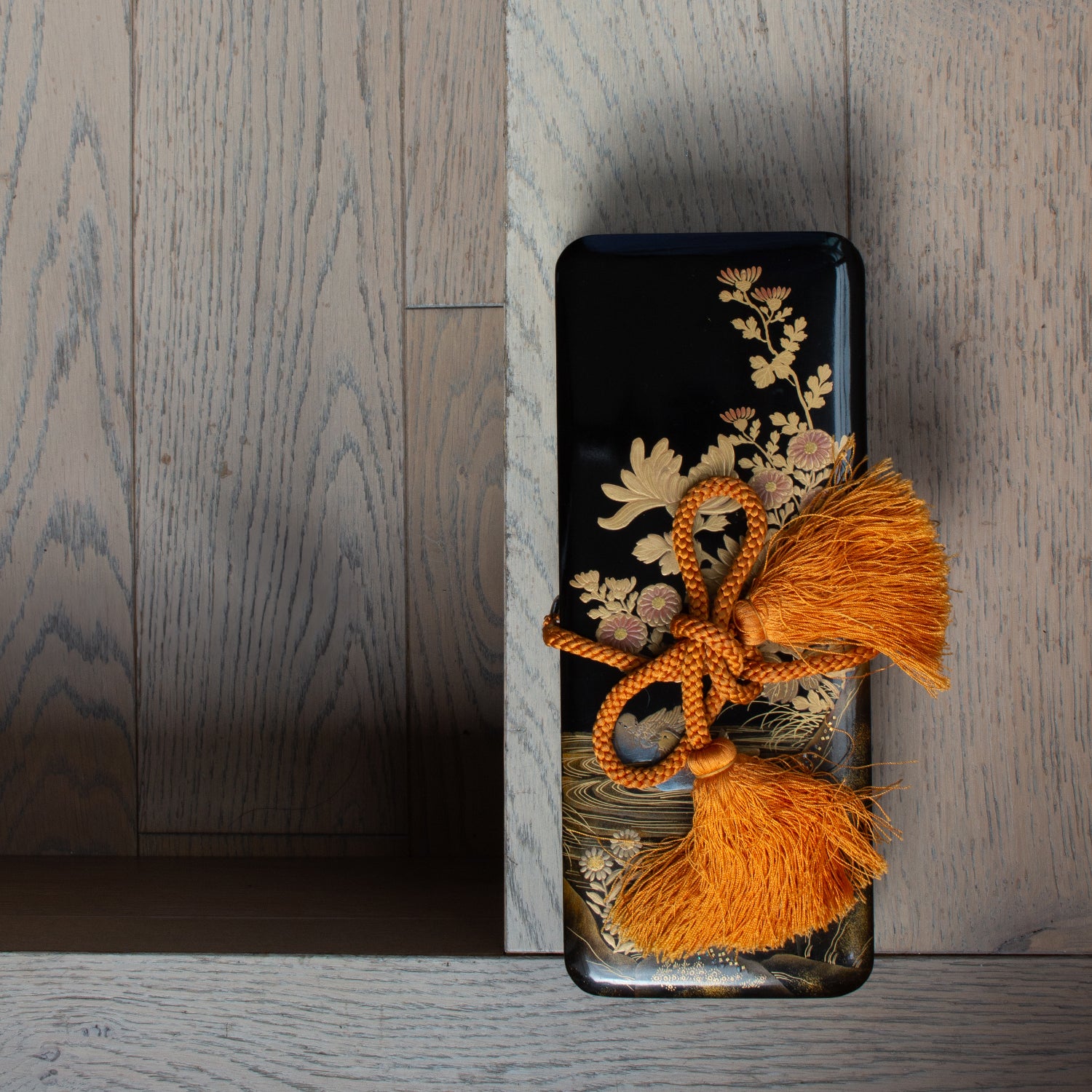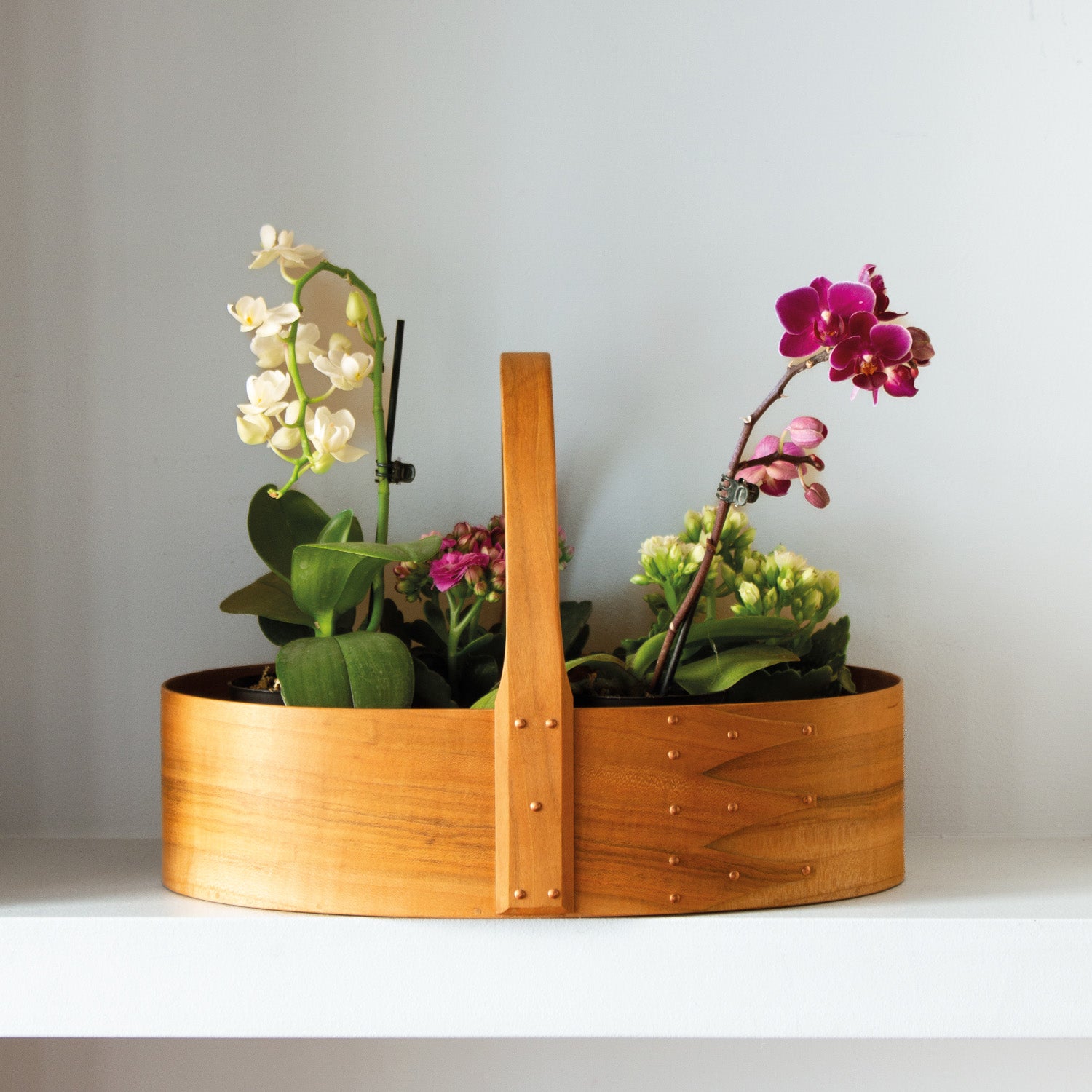
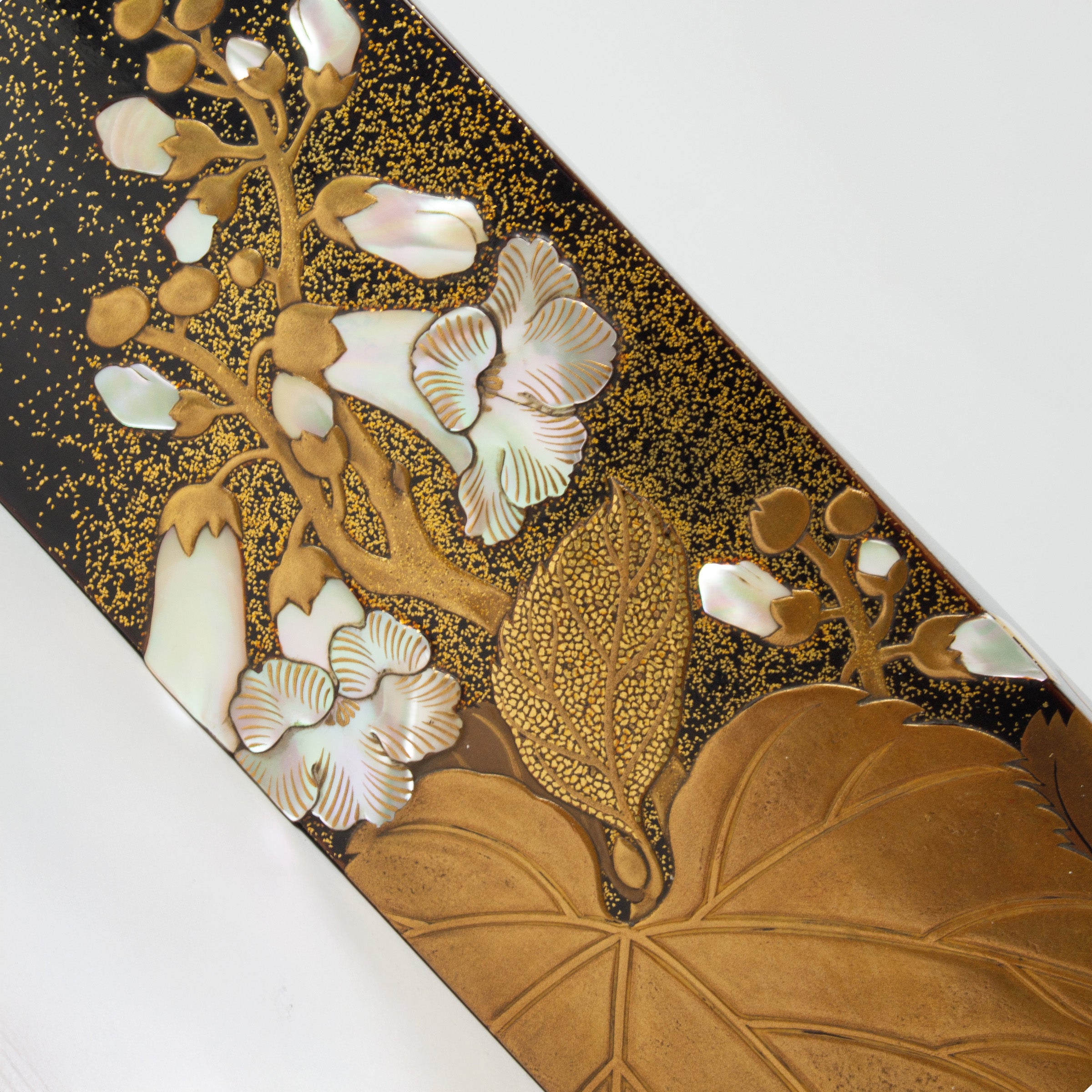
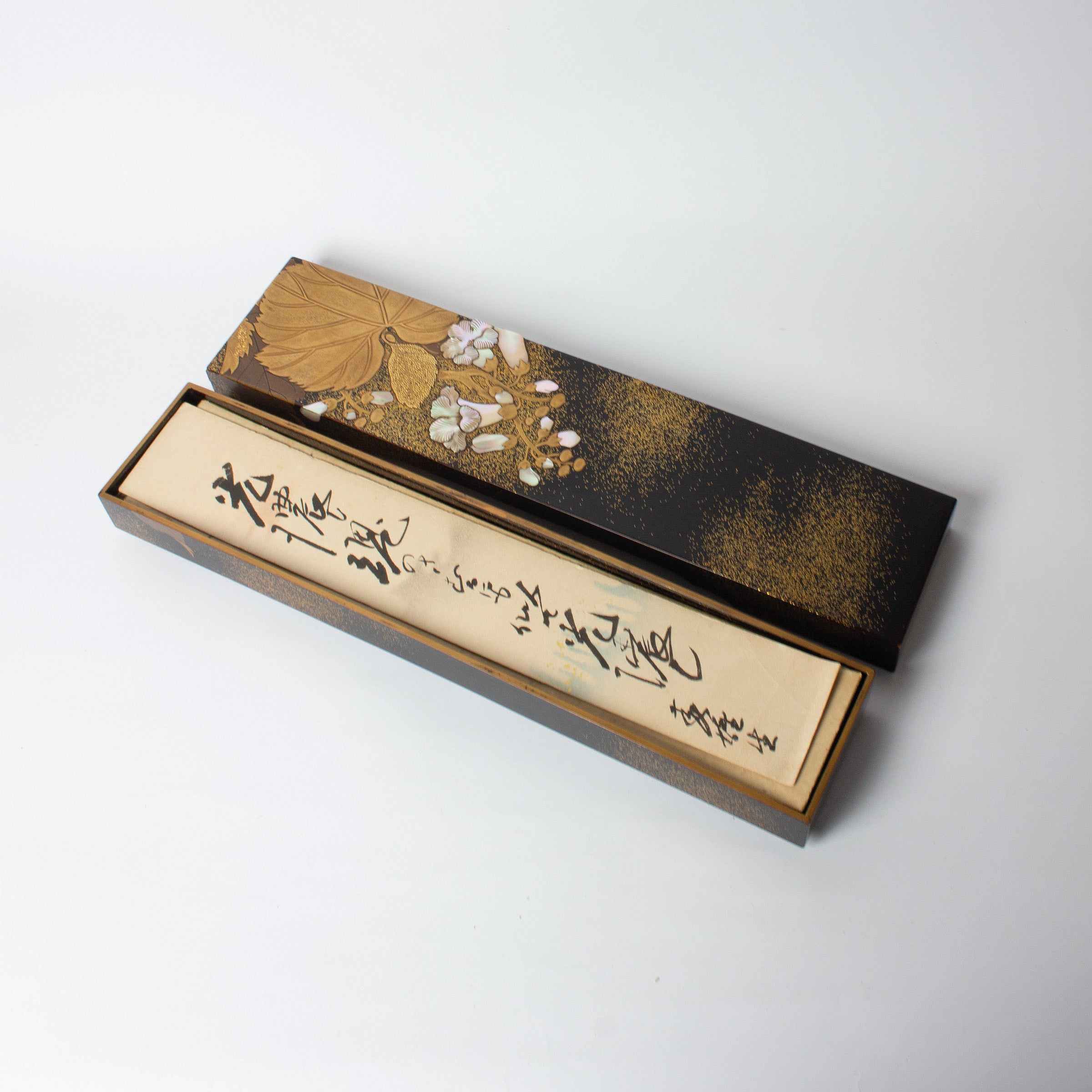
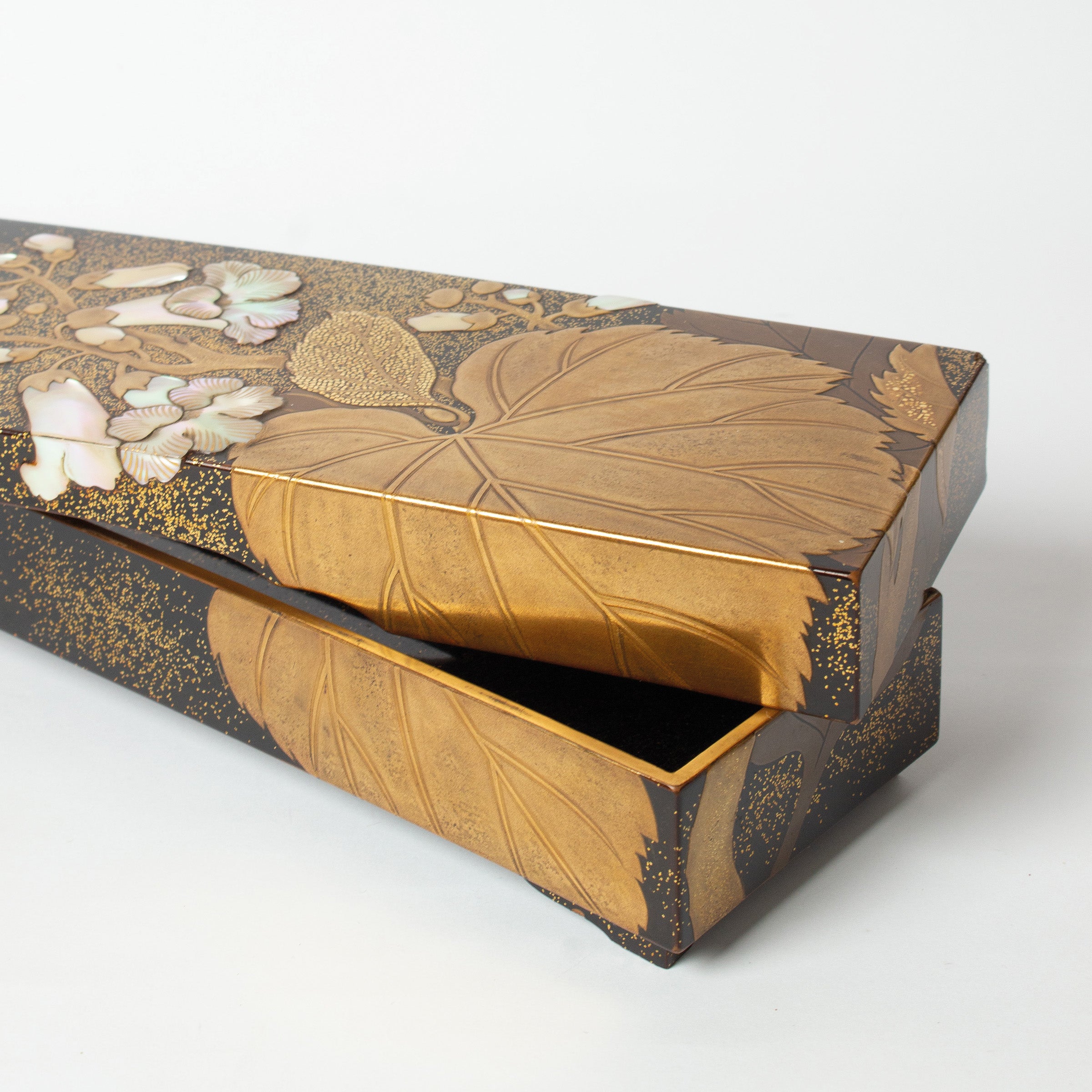
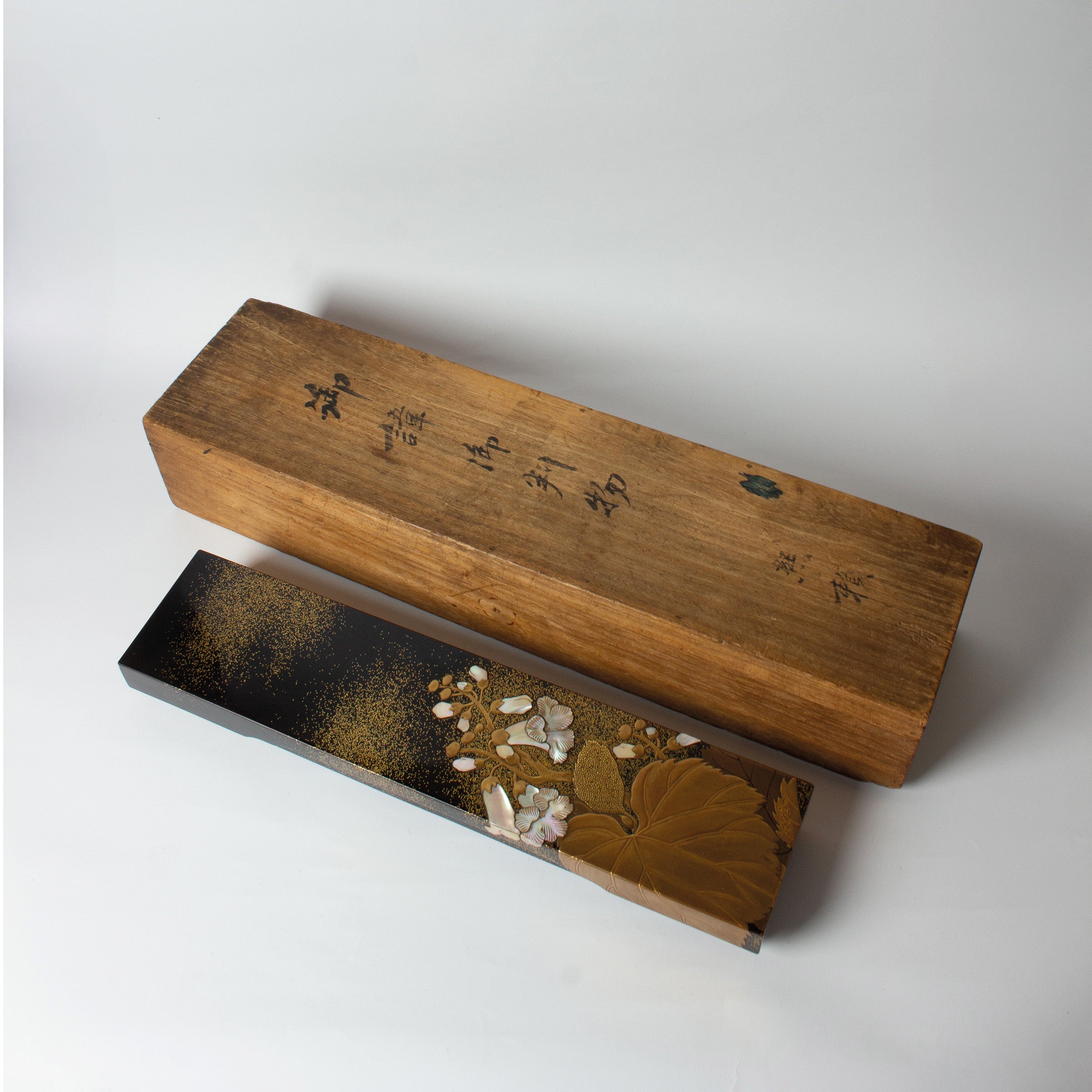

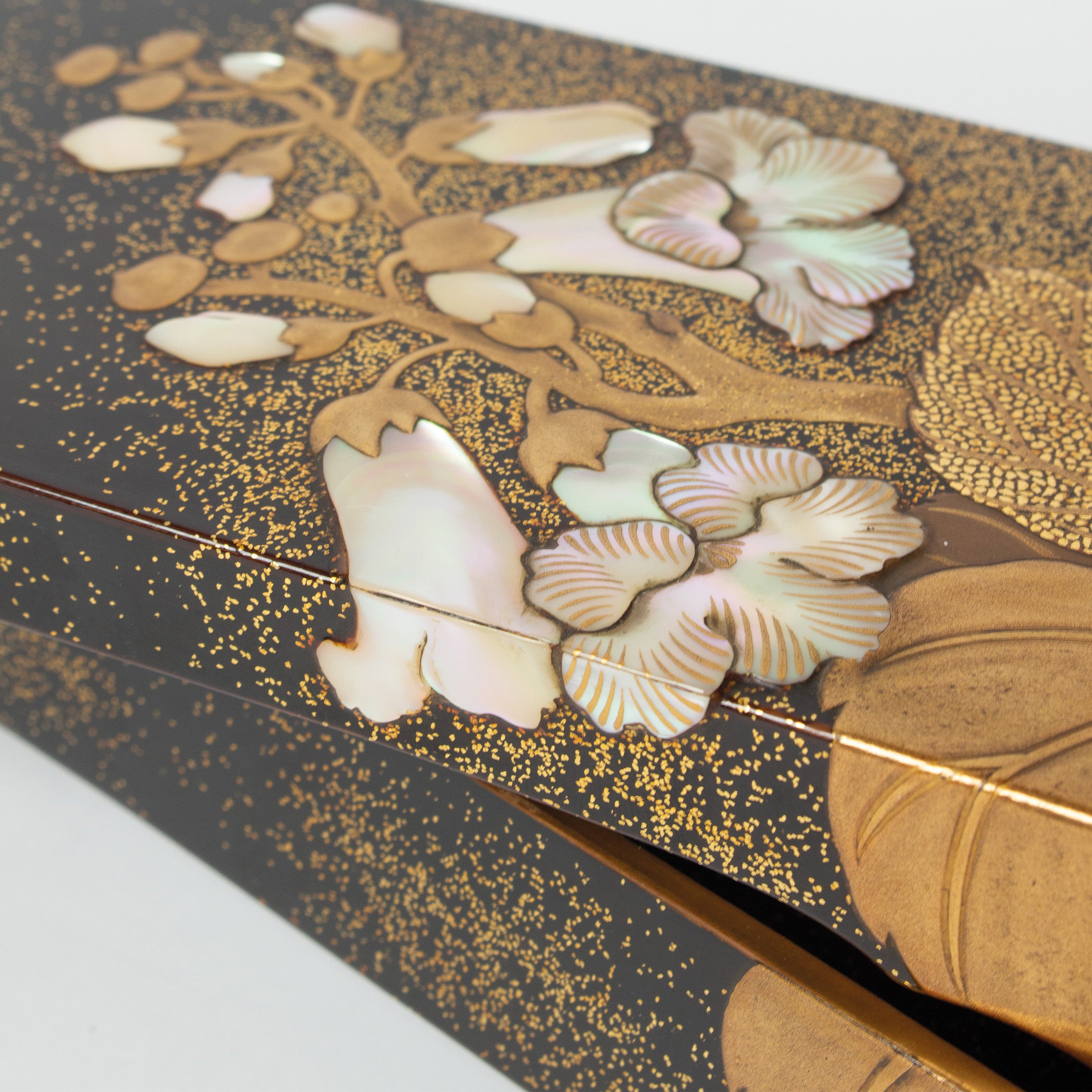
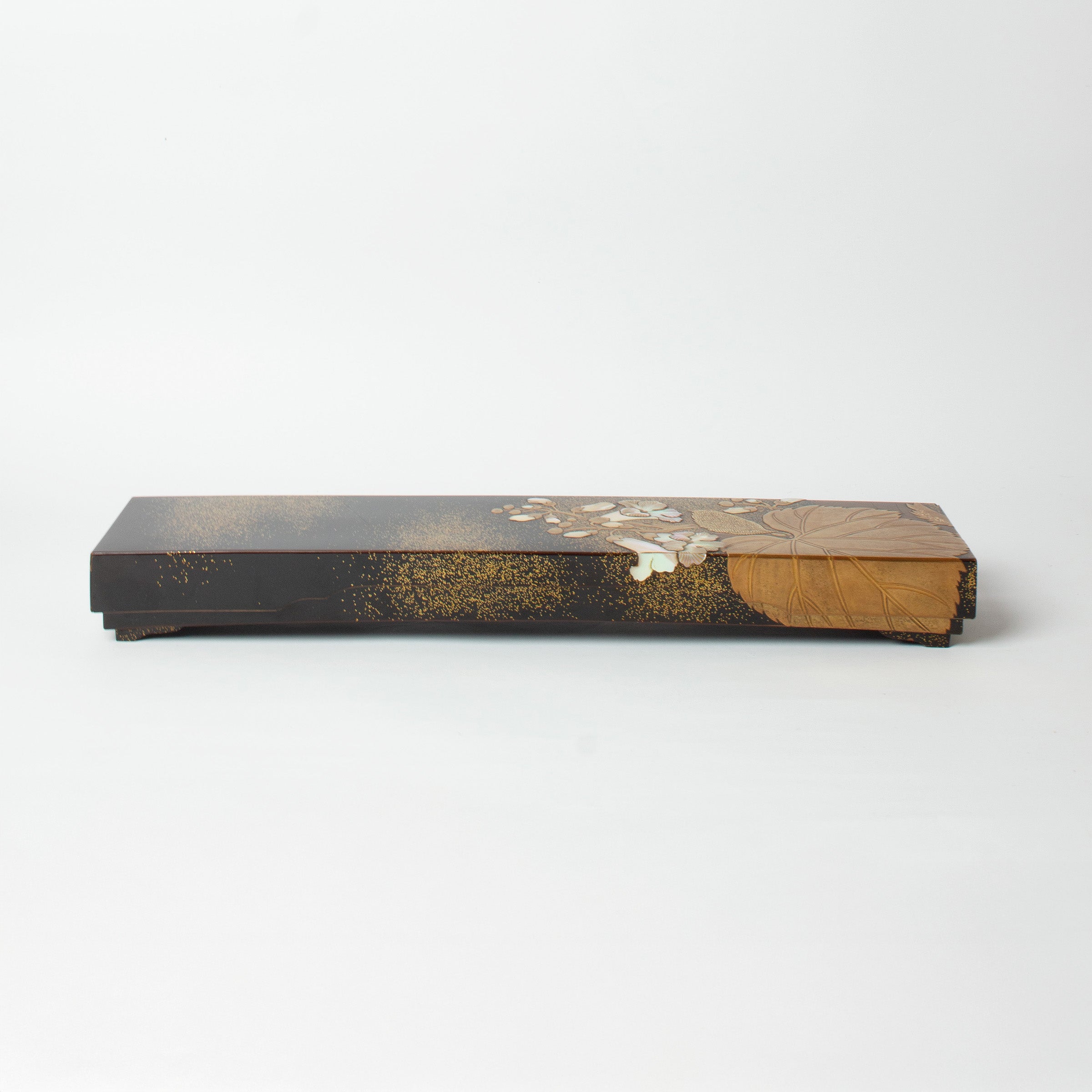
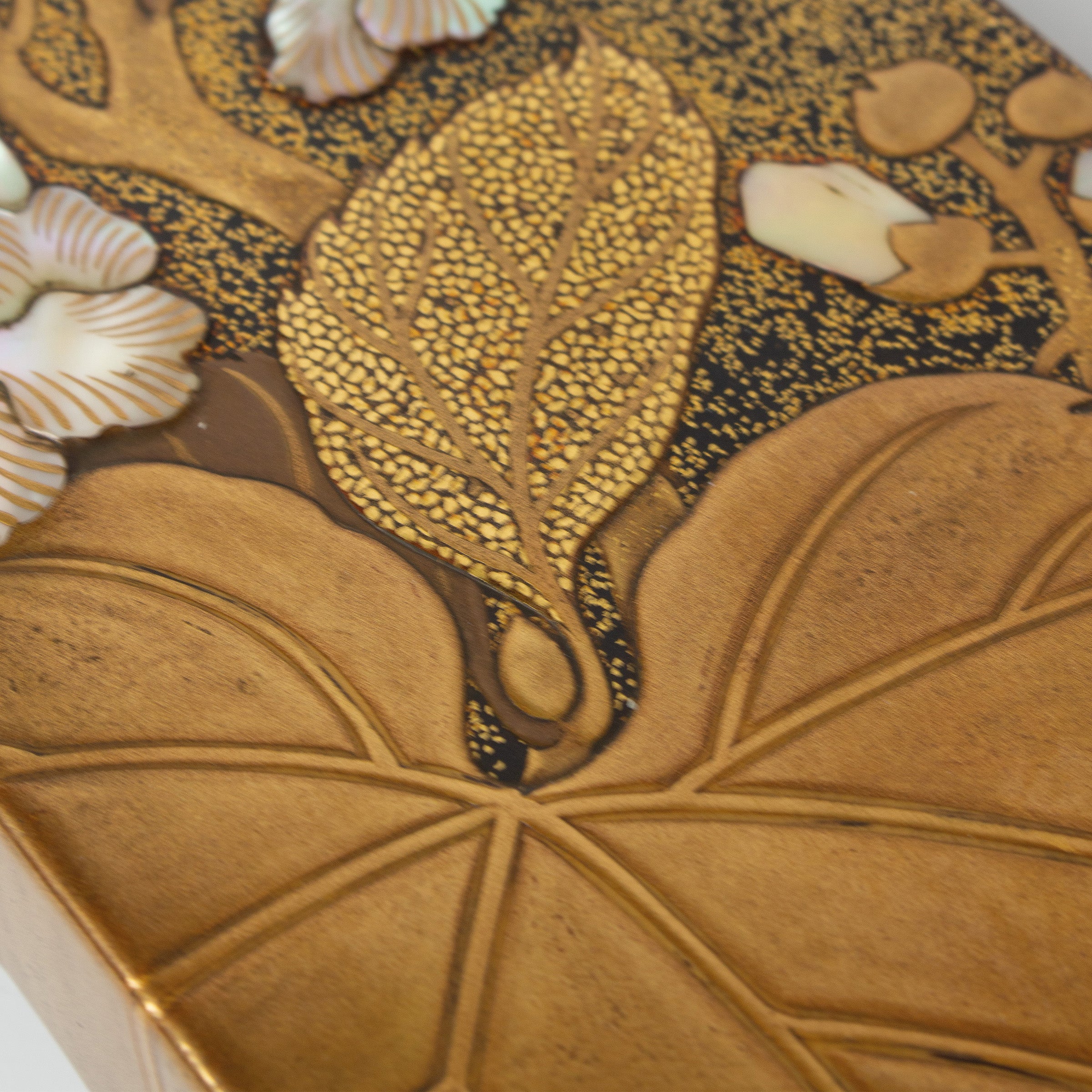
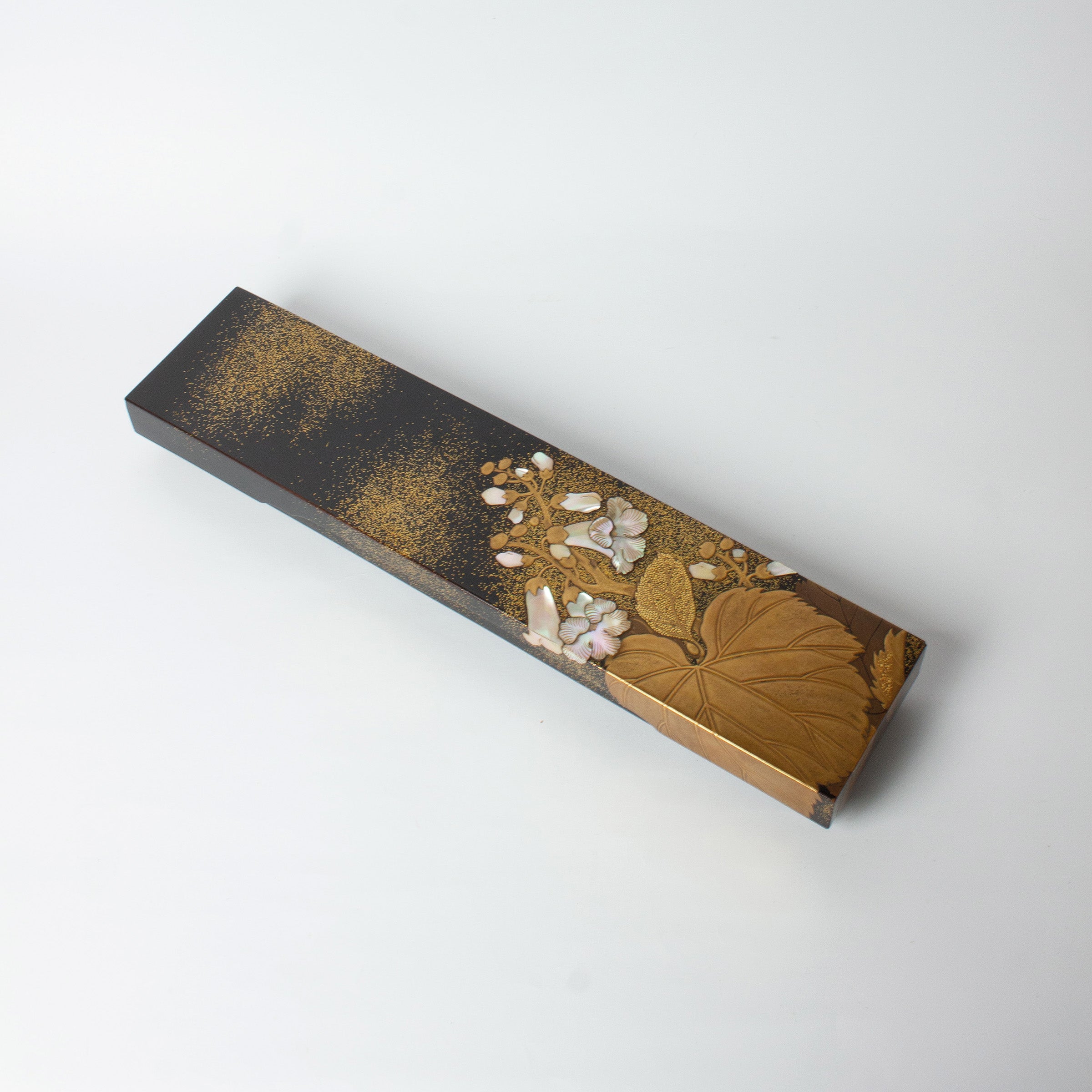
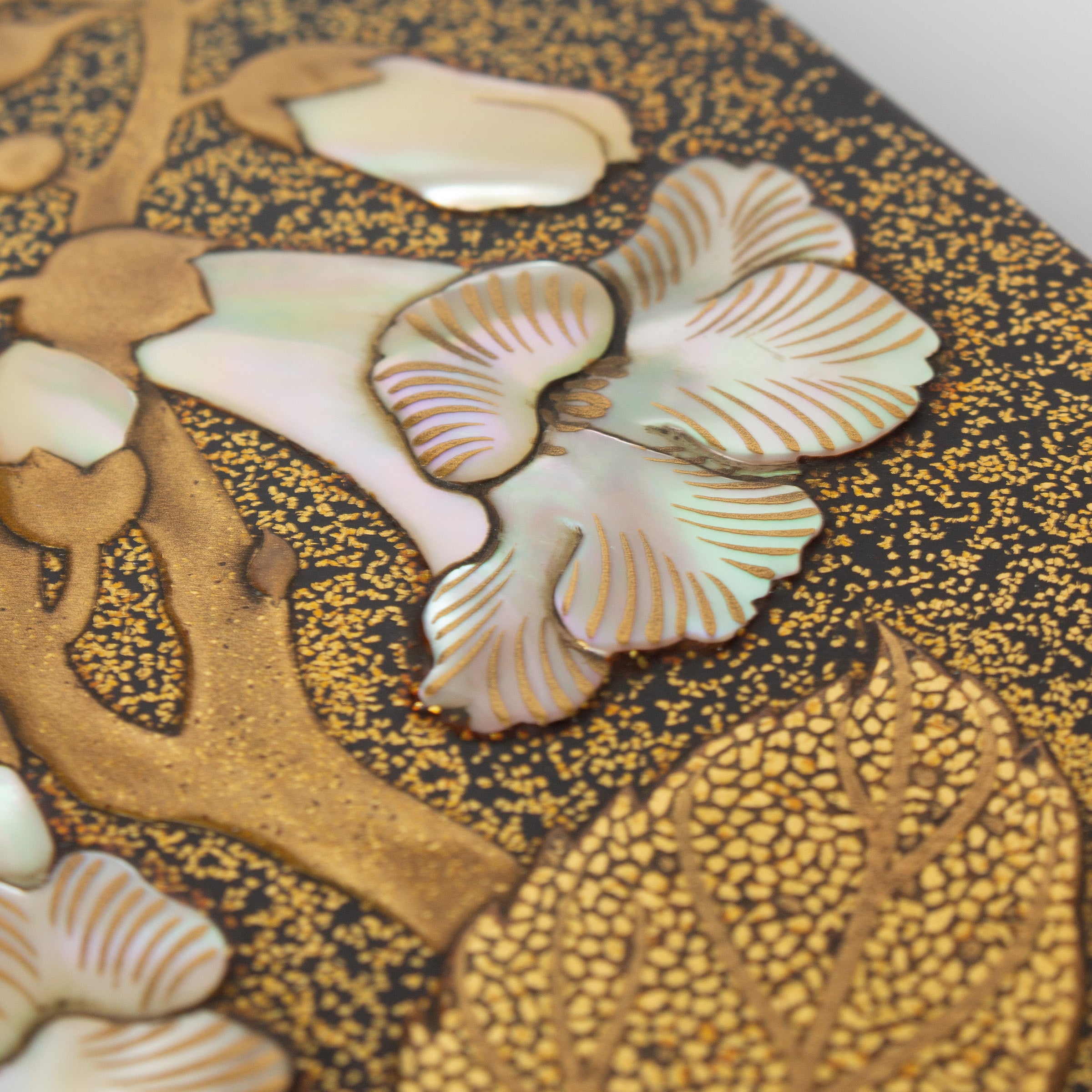
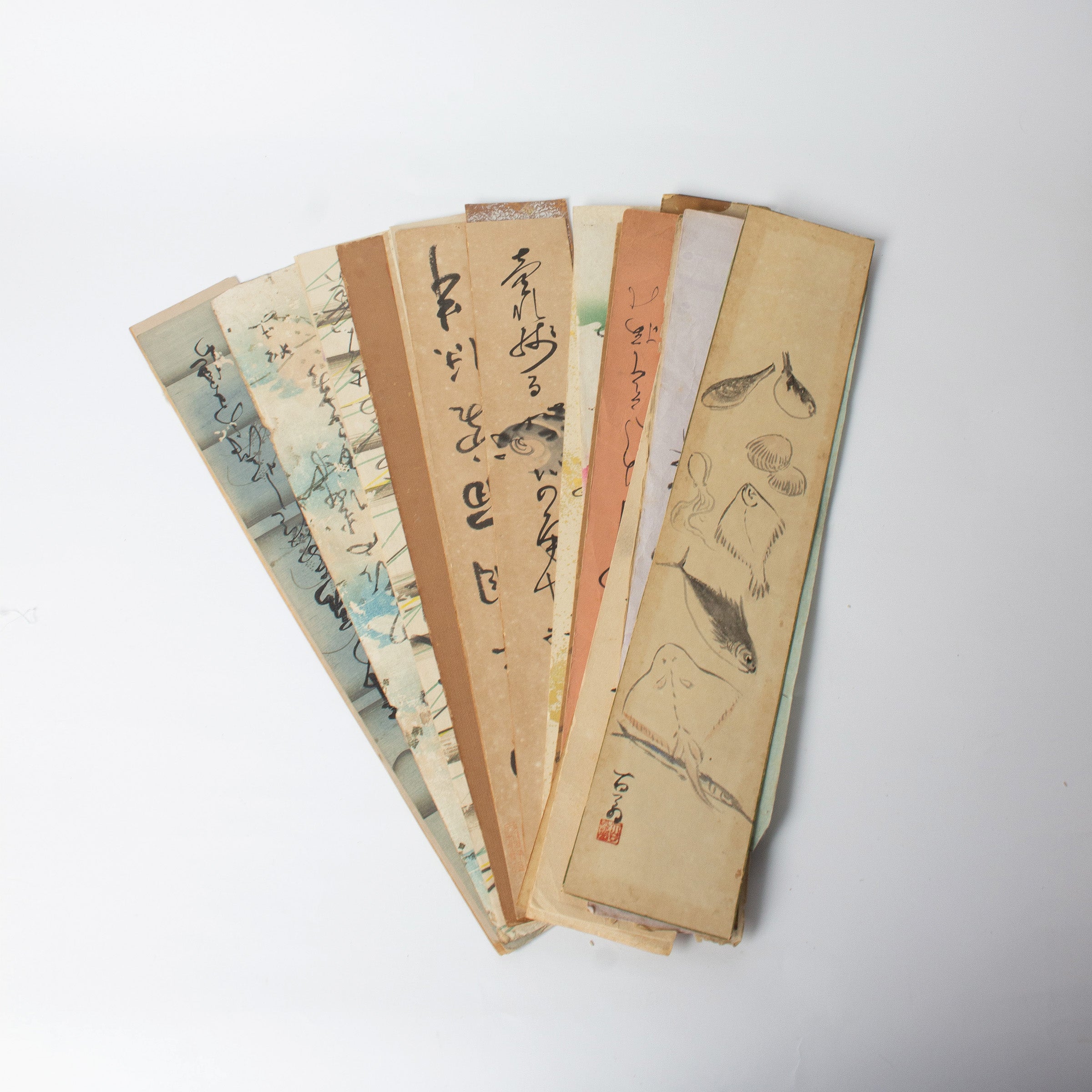

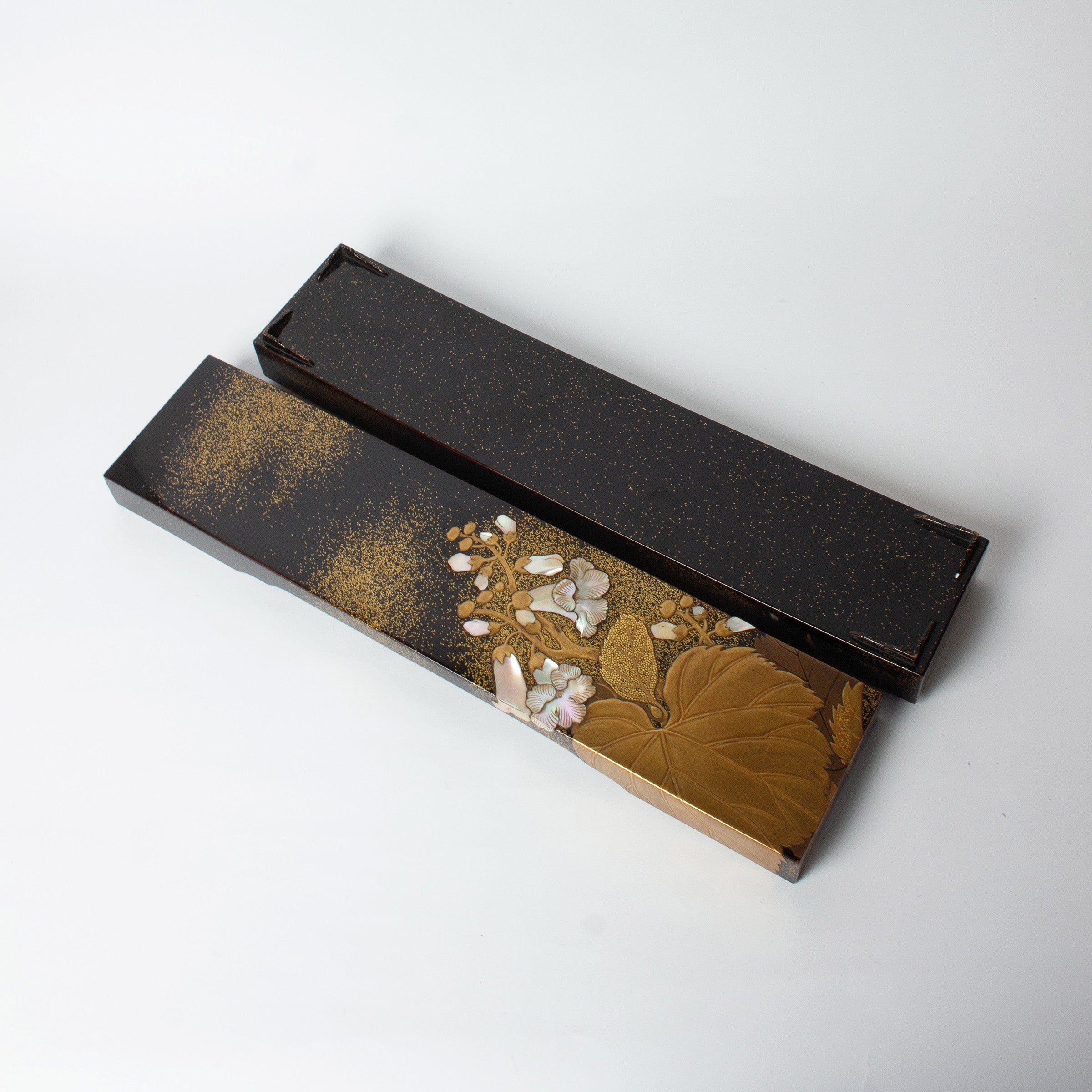
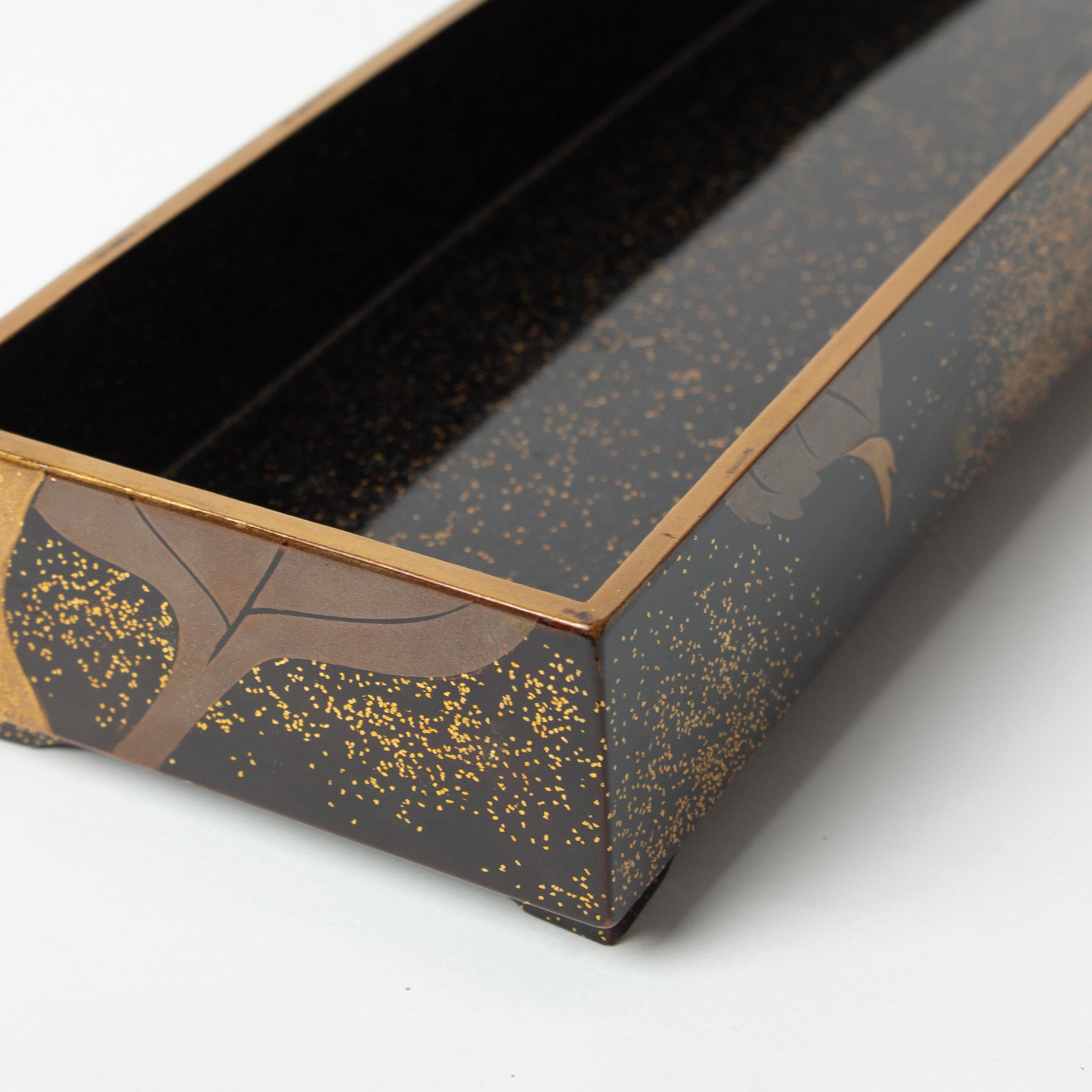
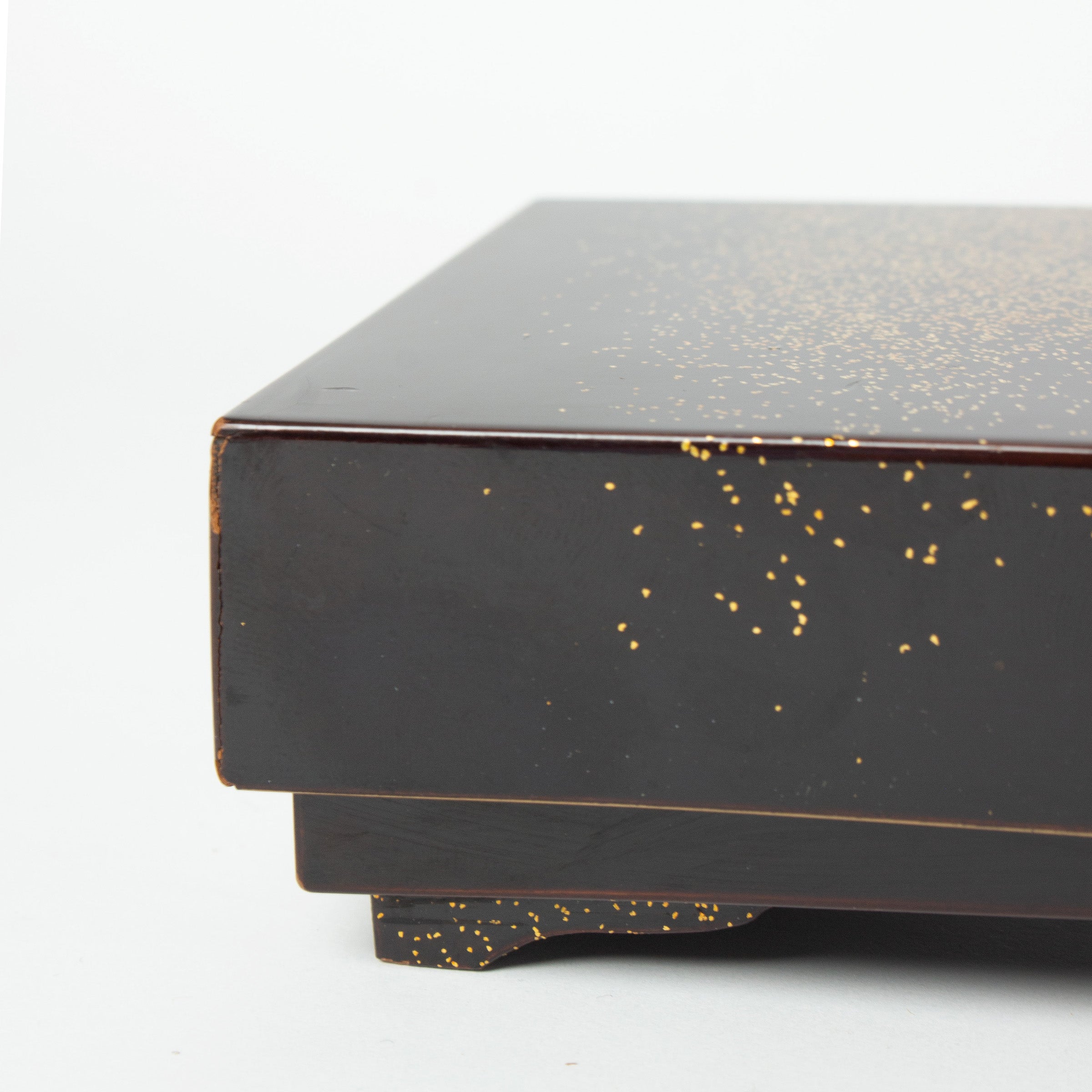
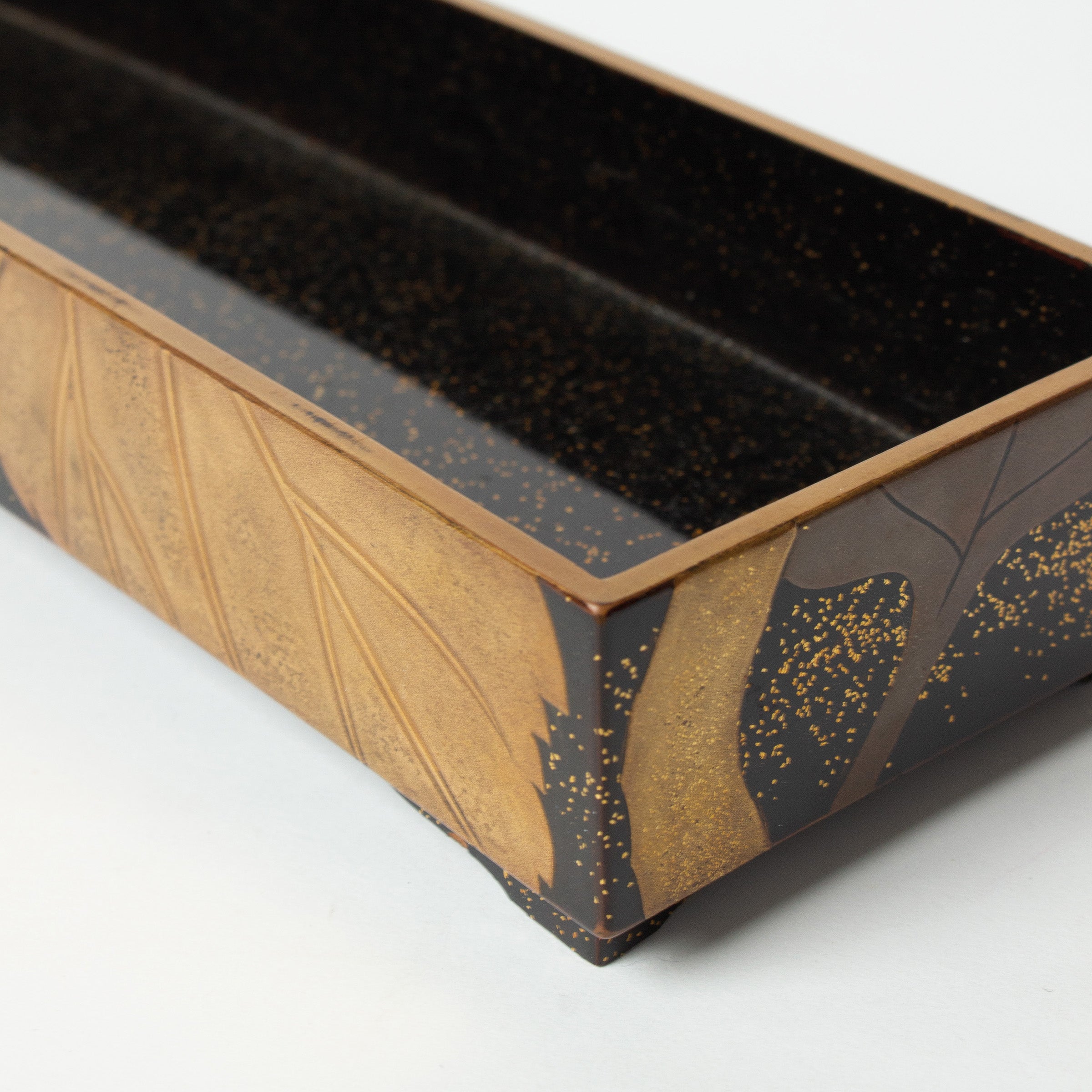
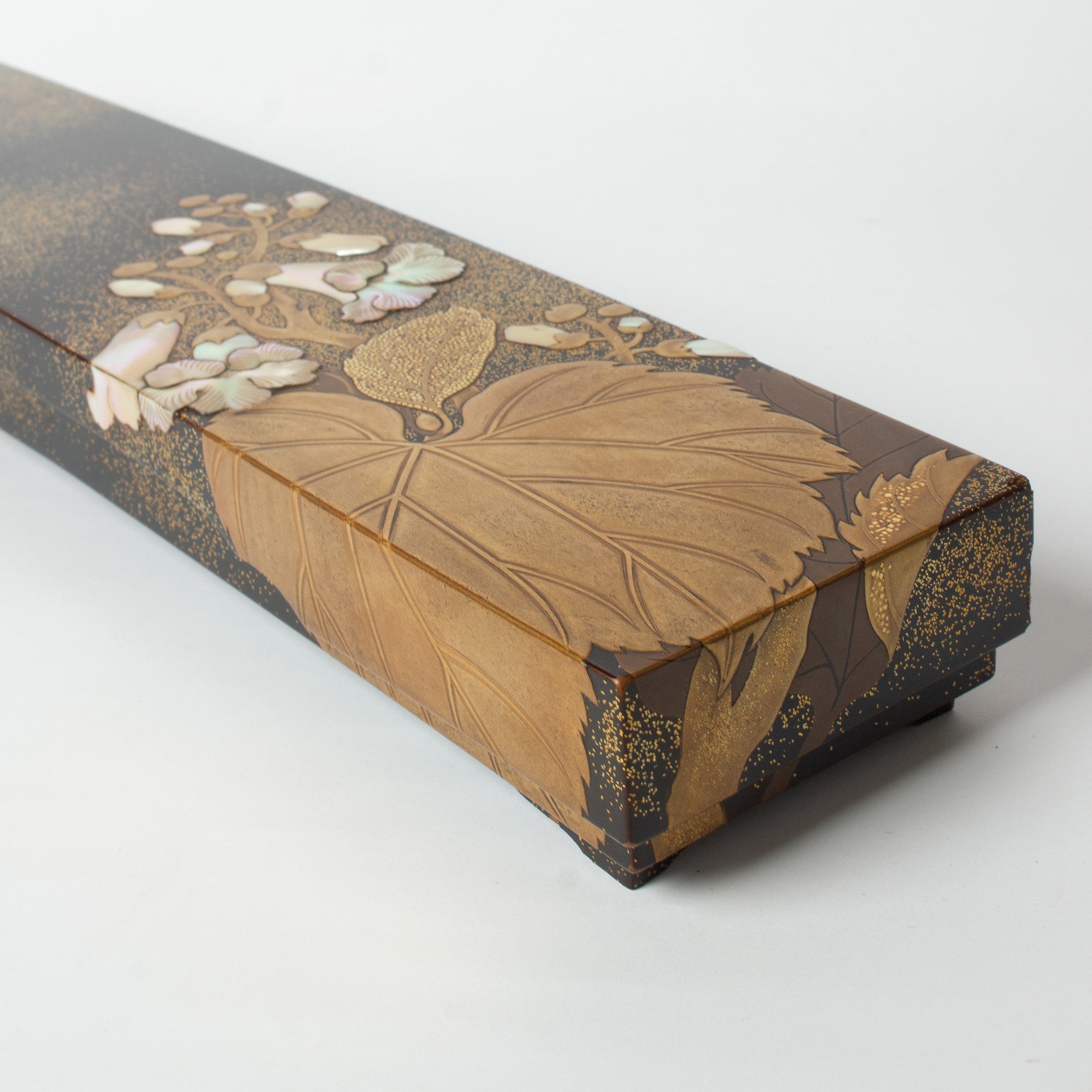
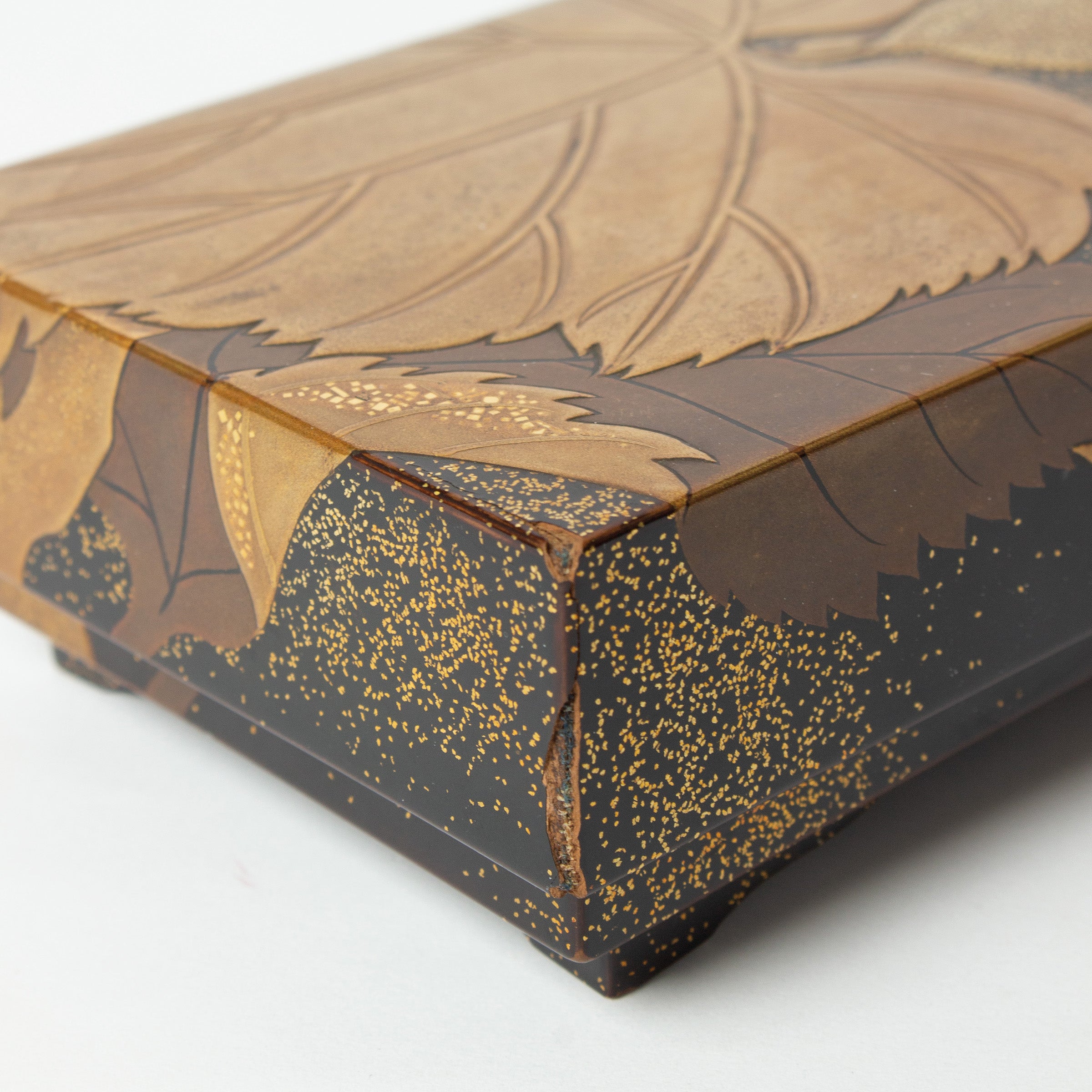
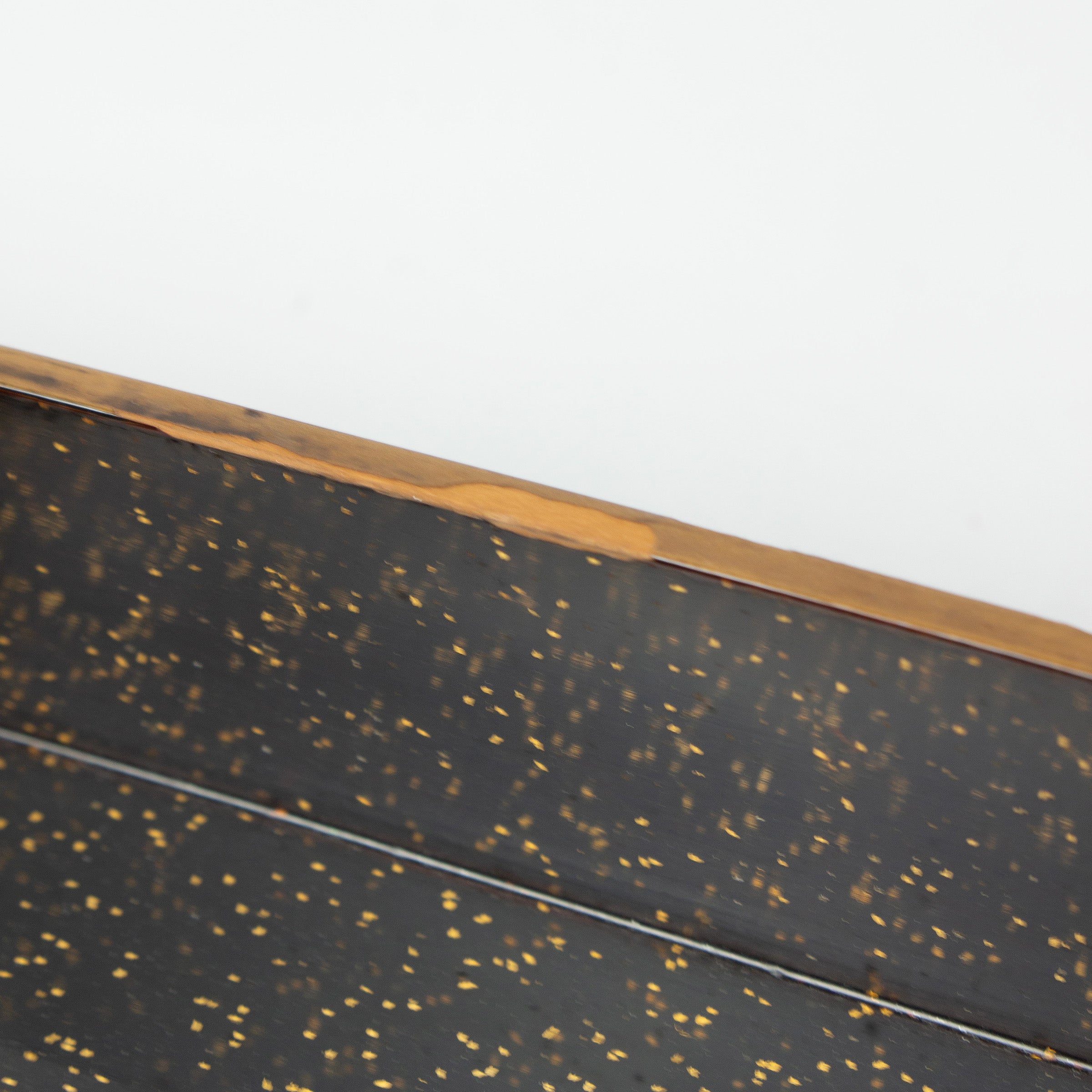

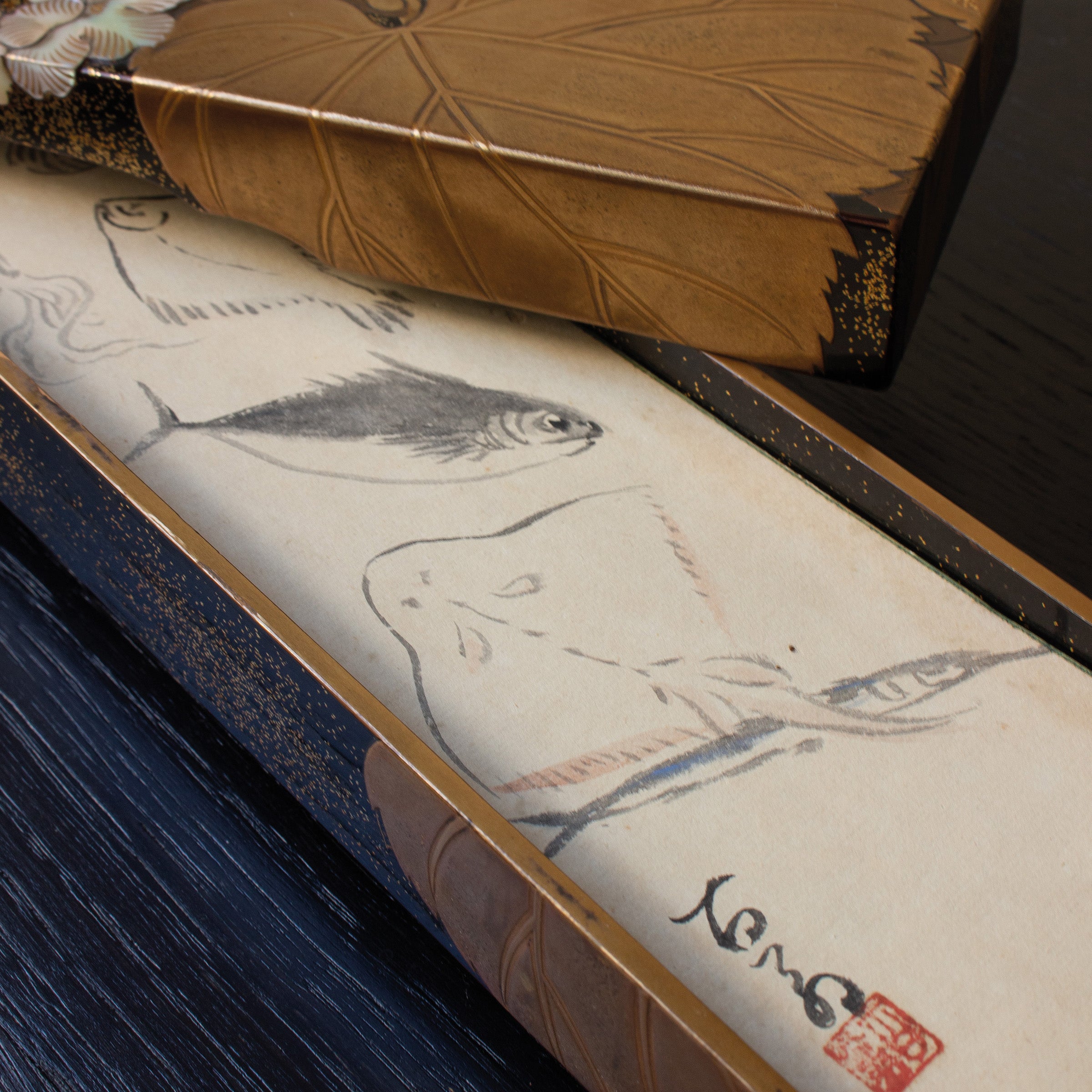
Poem box (tanzakubako) in lacquer, embossed gold powder and mother-of-pearl, Rimpa school
This sumptuous poem box (tanzakubako), made at the end of the Meiji period (late 19th / early 20th century), century), bears witness to the exceptionally refined art of Japanese lacquer in the direct line of the Rimpa school and the aesthetic developed by Ogata Kōrin. Heir to this tradition, the piece perfectly expresses its codes: stylized compositions of nature, subtle use of gold and mother-of-pearl, graphic balance of great modernity. (To learn more about the Rimpa school, a detailed article is available on our site ).
Both the exterior and interior of the box are treated with hirameji , a technique consisting of sprinkling fine particles of gold powder onto the still-fresh lacquer, then polishing the surface until a shimmering, silky background is obtained. This very deep background serves as a setting for a sumptuous decoration of tsutahana , flowers and climbing vine foliage.
In the Japanese imagination, the vine symbolizes vitality, growth, and the passage of time, its tendrils evoking the cycles of nature and life. Here, its broad, ribbed leaves and stylized grape clusters are rendered in takamaki-e , relief decoration, the most prestigious of lacquer techniques. This demanding process involves shaping the motifs by superimposing numerous layers of urushi lacquer before delicately applying gold powder ( kin-pun ) of different grain sizes, which is then polished for a long time to reveal its full brilliance.
The vine flowers are enhanced with mother-of-pearl inlays ( raden ), of extreme quality, finely cut, engraved and polished, whose very beautiful iridescent reflections enliven the whole and create a subtle play of light.
The decoration, of exceptional richness, is perfectly preserved: the mother-of-pearl is intact, the reliefs are clear, the golden background is astonishingly fresh. There is a crack on one corner of the lid (visible in the attached photograph) and some small chips on the inside edges and on another corner of the lid. These marks, consistent with use, do not affect the beauty or value of this piece, the overall condition of which remains remarkable given its age.
Tanzakubako are thin rectangular boxes designed to house tanzaku, strips of paper or silk on which poems and thoughts were written. Their slender format, slightly curved silhouette, and small integrated feet are classic features of this type of box.
An additional surprise: this tanzakubako contains a whole collection of calligraphed poems, some also illustrated, an exceptional and moving way to discover the sensitivity of the family who passed this box down from generation to generation. It should also be noted that on the inside lid of the wooden protective box there is a handwritten inscription evoking a Scholarly samurai in the service of the shogunate (bakushin), active during the Tenpō era (1830–1844), named Kinji (or Chikaji) Jibei. Reference to a poem written by this samurai, which was precious and kept in this box, probably created specifically for this function.
This box comes with its original signed wooden box (tomobako).
A tanzakubako of this quality is a rare testament to the art of Japanese lacquerware at the turn of the 20th century and the vitality of the Rimpa aesthetic at that time. A highly collectible item.
|
|
JAPAN |
|
|
(box only) Length 39cm x Width 9cm x Height 4.8cm |
| WEIGHT | (total) 920gr |
| COMPOSITION |
|
KNOW-HOW
Traditional Japanese lacquer, urushi, comes from the sap of the lacquer tree (Rhus Verniciflua), which flows after incision of the bark. It is a very precious material, a tree will give a maximum of 200ml of sap in its life, which is worked by specialized craftsmen. It takes many operations, slow and meticulous, and several months of work to bring real lacquer objects to life. It is the oldest craft in Japan! Initially used to protect and waterproof objects, this immutable craft has become an art of extreme sophistication. If you want to know more about the art of Japanese lacquer, you can read our dedicated article > .
DELIVERY
Delivery
Free delivery in metropolitan France for purchases over €150. Orders are generally sent within 2 working days, except in special cases announced in the banner at the top of the site.
Precious items are wrapped in beautiful cloth, beautifully tied in the precious art of Korean pojagi. Some exceptions apply, especially if the items are bulky. Learn more >
Detailed information on deliveries is available via this link >
Your invoice will be sent by email
Payment methods
By card (Stripe operator): Visa, MasterCard, Discover, American Express.
Secure card payment with 3D Secure.
By PayPal, Apple Pay, Google Pay and Shop Pay
Returns and exchanges
14 days to change your mind.
CARE INSTRUCTIONS
Clean with a very soft cloth to avoid scratches, soaked in a little warm water if necessary (never soak your lacquer objects). No microwave, dishwasher, dryer. Do not expose to direct sunlight for a long time (risk of discoloration). If the atmosphere is very dry and very hot, and to avoid the risk of cracking, you can place a glass filled with water next to your lacquer object.
Choose options
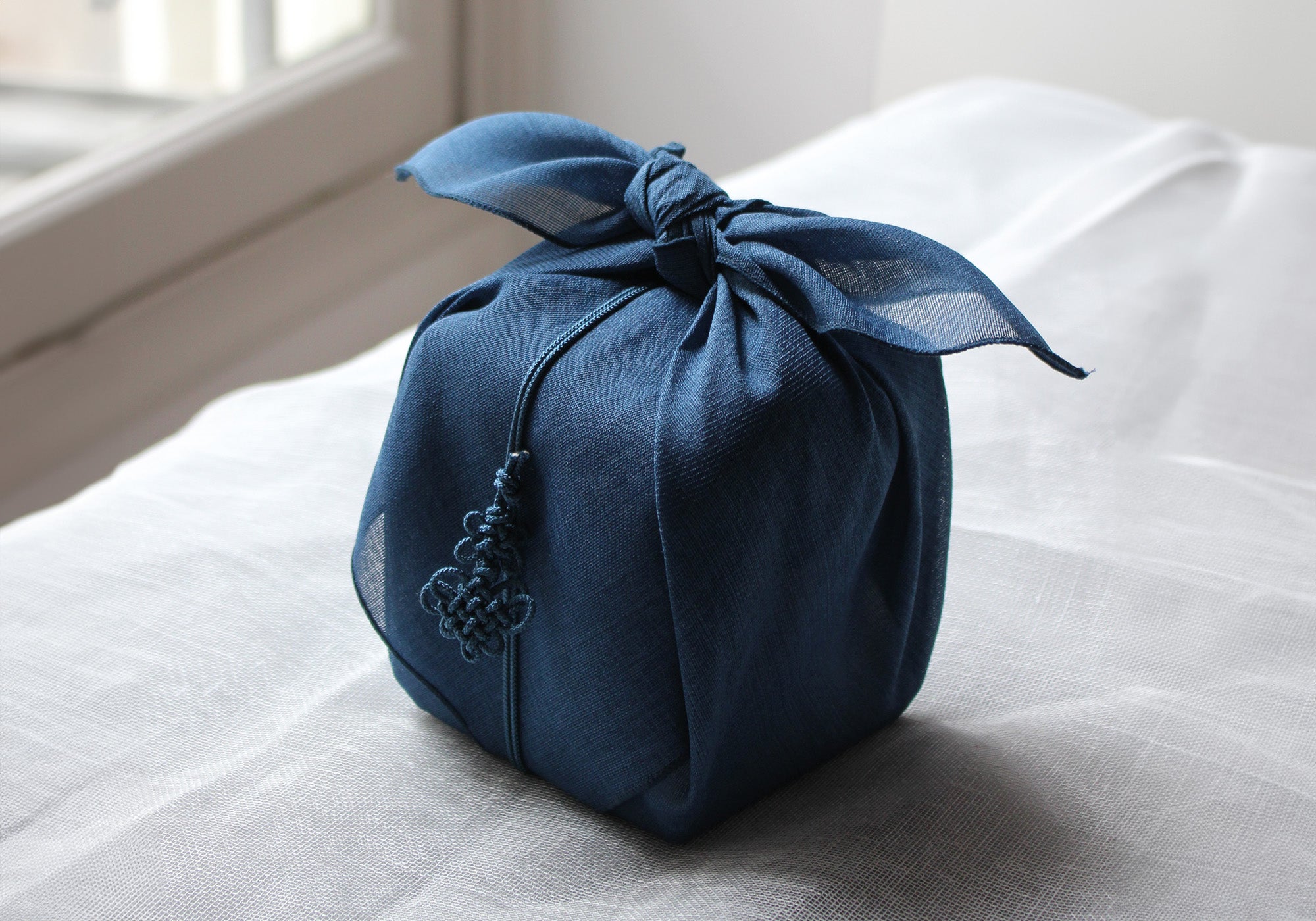
The art of wrapping
The exceptional items are wrapped in a beautiful fabric beautifully knotted using the little-known art of Korean pojagi and decorated with a delightful maedup (Korean ornamental knot). Details and conditions >


